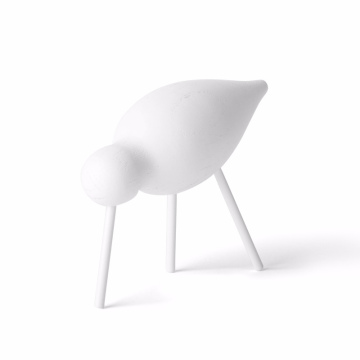Savoring Tradition: Discovering Japan’s Best Udon
Introduction to Udon: A Culinary Staple of Japan
Udon, a thick wheat noodle, stands as one of Japan's most cherished culinary traditions. Rooted in history, its origins can be traced back to the 9th century, with some theories suggesting its development may have been influenced by the introduction of Chinese noodles. Over the centuries, udon has evolved, reflecting regional variations and the artistry of Japanese cuisine. It is not merely a dish; it embodies the rich heritage and cultural significance of Japan's food lineage.
The basic components of udon are deceptively simple: wheat flour, water, and salt. These ingredients come together in an intricate process that transforms them into sumptuous noodles. The dough is kneaded, rolled, and cut into thick strands, which are then boiled to achieve the perfect chewy texture that udon is renowned for. This simplicity does not detract from udon’s versatility; various toppings and broths allow for endless interpretations, catering to local flavors and preferences. From the hot and comforting kitsune udon garnished with fried tofu to chilled versions served in summer, udon dishes can provide solace and delight across different seasons.
Within Japan, the preparation and serving of udon can vary widely. Each region boasts its own specialty, be it the heartwarming sanuki udon from Kagawa prefecture, known for its bouncy texture, or the delicate yaki udon, which showcases stir-fried elements. This diversity illustrates not only the adaptability of udon but also the culinary creativity inherent in Japanese culture. In this sense, udon becomes more than just sustenance; it is a medium for storytelling, community gathering, and the constant evolution of culinary practices, signifying a deep-rooted tradition that continues to thrive in modern Japan.
The Craft of Making Udon: From Dough to Bowl
The traditional craft of making udon represents a meticulous process that emphasizes both skill and heritage. It begins with selecting quality ingredients, primarily flour, water, and salt. The flour used in udon-making is typically a high-gluten variety, which plays a crucial role in achieving the desired chewy texture. Some regions may use local wheat flour that imparts distinctive flavors and characteristics to the noodles. The combination of water and salt creates a brine solution that enhances the dough's elasticity, giving it the right consistency for kneading.
The first step in crafting udon involves measuring the ingredients accurately before combining them in a mixing bowl. Once combined, the dough is kneaded by hand, a process that can take anywhere from 10 to 20 minutes. This kneading not only blends the ingredients but also develops the gluten structure, which is essential for achieving the perfect chewy texture. Craftsmen often emphasize that the kneading should be done with care and precision, as it significantly impacts the final product.
After the dough reaches the right consistency, it is left to rest, allowing the gluten to relax. Once rested, the dough is rolled out into a flat sheet, typically around half a centimeter thick. Following this, the dough is cut into strips to form the udon noodles. The thickness of these strips may vary based on regional traditions; for instance, some areas favor thicker noodles, while others prefer a thinner cut. This variety in udon-making techniques showcases the regional diversity present in Japanese cuisine and highlights the significance of local ingredients. Ultimately, the care taken in rolling, cutting, and shaping the noodles sets apart expertly crafted udon from mass-produced alternatives, celebrating Japan’s rich culinary tradition.
Top Udon Shops to Visit Across Japan
Japan is home to a multitude of udon shops that showcase the diverse flavors and cooking styles associated with this beloved noodle dish. Each region boasts its unique take on udon, drawing culinary enthusiasts from all over the world. Below, we explore some of the most renowned udon shops across Japan that offer an authentic culinary experience for visitors.
One must-visit destination is Kondo, located in Tokyo's bustling Tsukiji area. Known for its homemade, chewy udon, Kondo serves udon prepared fresh daily. A popular choice is the Niku Udon, which features tender slices of beef in a richly flavored broth. Diners appreciate the shop's warm atmosphere and the expertise of the chefs who have honed their craft over generations. Visitors often note the delightful experience of enjoying udon in an environment steeped in tradition.
In Takamatsu, the heart of Kagawa Prefecture, lies Yokohama Udon, famous for its Kagawa-style udon, known for its firm texture and simplicity. This establishment offers a variety of udon dishes, but the Kama-age Udon, where the noodles are served with a dipping sauce, stands out as a local favorite. The owners’ passion for udon is evident in their commitment to preserving traditional methods and sourcing local ingredients. Many patrons leave with fond memories and recommendations to revisit.
Lastly, don’t overlook Udon Shin in Matsuyama, which features a serene garden setting. Here, diners can enjoy a bowl of udon paired with locally sourced seasonal ingredients. The signature dish is the Tenpura Udon, a delightful combination of crispy tempura and tender udon. Locals rave about the shop’s ambiance and the chef’s friendly demeanor, enhancing the overall dining culinary experience.
These udon shops present more than just a meal; they encapsulate the culinary heritage of Japan, inviting patrons to savor the flavors that have been cherished through generations.
Udon in Modern Cuisine: Innovations and Trends
In recent years, udon has transitioned from a traditional favorite to a versatile canvas for culinary innovation. Chefs across Japan and globally are embracing this classic noodle, enhancing its appeal by introducing modern flavors and fusion styles that cater to contemporary palates. This evolution reflects not just a shift in taste but also a desire to reinterpret traditional dishes in ways that resonate with today’s diners.
Contemporary variations of udon are emerging, showcasing its adaptability. One notable trend is the rise of udon salads, combining the hearty texture of these noodles with fresh vegetables, proteins, and zesty dressings. These refreshing dishes are perfect for warmer months and have gained popularity in urban eateries and health-conscious menus. Additionally, cold udon dishes, such as zaru udon served with dipping sauces, are on the rise, allowing for an enjoyable and light meal option that still honors the essence of udon.
Beyond basic preparations, gourmet toppings are redefining what udon can be. Innovative ingredients such as truffles, artisanal cheeses, or even avocado are being seamlessly combined into traditional dishes, presenting a sophisticated twist that attracts adventurous diners. These enhancements allow chefs to showcase their creativity while still respecting udon’s enviable cultural heritage.
Moreover, the influence of international cuisine has prompted many establishments to experiment with fusion dishes. The incorporation of flavors from cuisines like Italian, Mexican, or even Thai has led to delicious but unexpected pairings that have rejuvenated the way udon is perceived. For instance, udon stir-fr fries or udon served in a spicy curry broth have emerged as culinary favorites, highlighting the noodle’s flexibility.
As chefs continue to innovate, udon remains deeply rooted in tradition while evolving to meet the preferences of modern diners, demonstrating that this beloved dish is far from static. The intersection of heritage and innovation offers a fascinating glimpse into the future of udon, promising exciting new flavors for all to enjoy.






